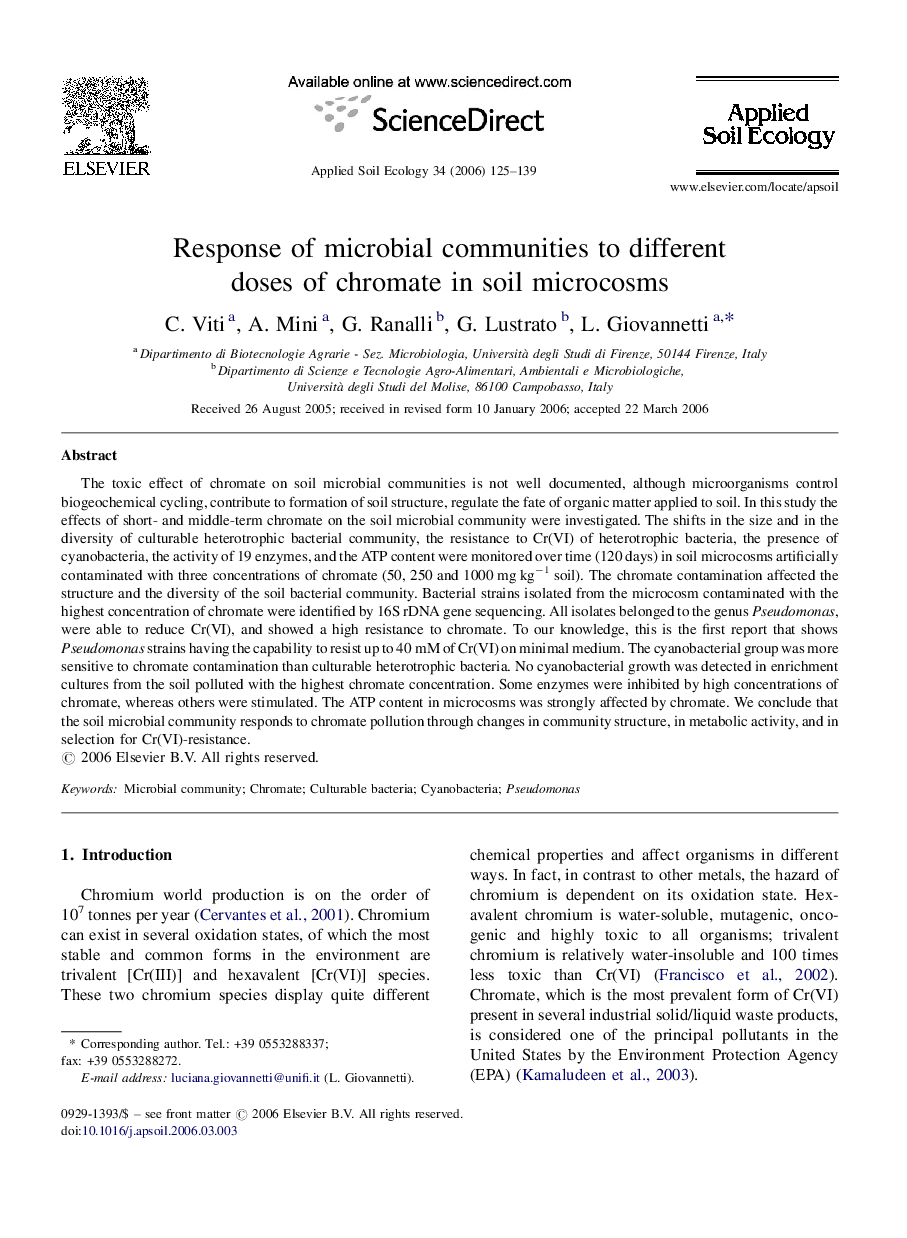| کد مقاله | کد نشریه | سال انتشار | مقاله انگلیسی | نسخه تمام متن |
|---|---|---|---|---|
| 4383406 | 1617839 | 2006 | 15 صفحه PDF | دانلود رایگان |

The toxic effect of chromate on soil microbial communities is not well documented, although microorganisms control biogeochemical cycling, contribute to formation of soil structure, regulate the fate of organic matter applied to soil. In this study the effects of short- and middle-term chromate on the soil microbial community were investigated. The shifts in the size and in the diversity of culturable heterotrophic bacterial community, the resistance to Cr(VI) of heterotrophic bacteria, the presence of cyanobacteria, the activity of 19 enzymes, and the ATP content were monitored over time (120 days) in soil microcosms artificially contaminated with three concentrations of chromate (50, 250 and 1000 mg kg−1 soil). The chromate contamination affected the structure and the diversity of the soil bacterial community. Bacterial strains isolated from the microcosm contaminated with the highest concentration of chromate were identified by 16S rDNA gene sequencing. All isolates belonged to the genus Pseudomonas, were able to reduce Cr(VI), and showed a high resistance to chromate. To our knowledge, this is the first report that shows Pseudomonas strains having the capability to resist up to 40 mM of Cr(VI) on minimal medium. The cyanobacterial group was more sensitive to chromate contamination than culturable heterotrophic bacteria. No cyanobacterial growth was detected in enrichment cultures from the soil polluted with the highest chromate concentration. Some enzymes were inhibited by high concentrations of chromate, whereas others were stimulated. The ATP content in microcosms was strongly affected by chromate. We conclude that the soil microbial community responds to chromate pollution through changes in community structure, in metabolic activity, and in selection for Cr(VI)-resistance.
Journal: Applied Soil Ecology - Volume 34, Issues 2–3, December 2006, Pages 125–139